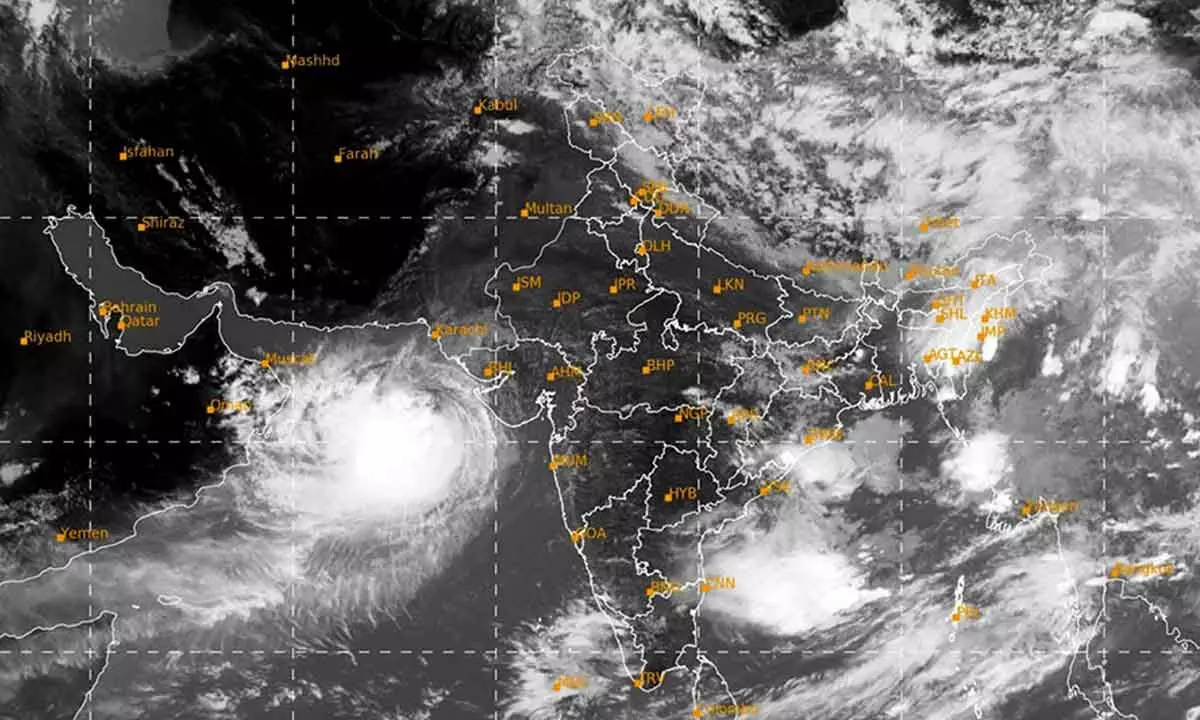Hyderabad: Rising cyclones in India’s west coast

Rising cyclones in India’s west coast
Residents living in the southwestern coastal regions have little reason for optimism when it comes to the recurrent cyclones in the Arabian Sea, as studies indicate a consistent upward trend in both the frequency and duration of these cyclones.
Hyderabad: Residents living in the southwestern coastal regions have little reason for optimism when it comes to the recurrent cyclones in the Arabian Sea, as studies indicate a consistent upward trend in both the frequency and duration of these cyclones.
The Indian Institute of Tropical Meteorology (IITM) confirms that cyclones in the Arabian Sea have become more frequent, longer lasting, and more intense. Conversely, there appears to be a slight decline in the occurrence of cyclones in the Bay of Bengal. According to the study ‘Changing status of tropical cyclones over the north Indian Ocean’ by IITM, “The number of cyclones in the Arabian Sea has seen a significant rise of 52 percent, with a notable increase of 150 percent in the occurrence of very severe cyclones. In contrast, the Bay of Bengal has experienced a decrease of eight percent in the number of cyclones. Over the span of four decades, there has been a substantial escalation in cyclone severity, including an 80 percent increase in the overall duration of cyclones in the Arabian Sea and a significant 260 percent increase in the duration of very severe cyclones.
These heightened cyclone activities in the Arabian Sea can be attributed to the correlation between increasing ocean temperatures, amplified moisture availability, and the effects of global warming.”
According to the observations made by Roxy Mathew Koll, Climate Scientist, IITM, the Arabian Sea has experienced a rapid increase in sea surface temperatures over the past century.
These temperatures frequently surpass the warm pool threshold, providing favourable conditions for active convection, heavy rainfall, and intense cyclones.
Comparing the temperatures before cyclone formation in recent decades to those of four decades ago, there has been an average rise of 1.2-1.4°C in the Arabian Sea.
This significant temperature increase has directly contributed to a surge in both the frequency and intensity of cyclones in the region.
Moreover, as a consequence of the warming in the Arabian Sea, instances of extreme rainfall (exceeding 150 mm/day) leading to floods have tripled across India.
The study indicate that the rate of sea level rise is a cause for concern. Between 1900 and 1971, the average global sea level rise was measured at 1.3 cm every ten years.
However, this rate accelerated to 1.9 cm per decade between 1971 and 2001, and further escalated to 3 cm per decade between 2001 and 2018.
These findings highlight a significant increase in the rate of sea level rise over the years, indicating a growing challenge posed by rising sea levels globally.
















